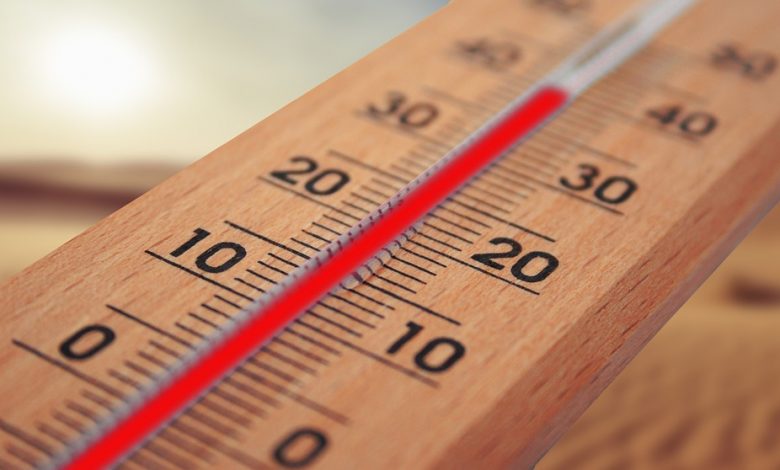

By Joachim Ng
As early as January the Malaysian Meteorological Department had already warned of dryer and hotter days in 2024, especially for northern states including the interior of Perak. In March, Level 1 heatwave alerts were issued for Hulu Perak, Kuala Kangsar, Kampar, and Kinta when temperatures stood at 35-37 degrees C over three consecutive days. Parts of Hulu Perak were even issued a Level 2 alert when temperatures approached 40 degrees C.
Last year wasn’t as hot as this year has turned out to be, and last year was the hottest on record for many Asian countries. But in just five months this year 39 people suffered heat stroke, heat exhaustion, and heat convulsions. In February one person died of heat stroke out of 27 cases of heat-related illnesses reported during the first quarter of 2024.
Malaysians should also be made aware that heat stress isn’t just about high temperatures. Heat stress is a combination of temperature and humidity, known as a “wet-bulb” measurement. Sustained exposure to a wet-bulb temperature of 35 degrees C is considered fatal. High wet-bulb temperatures saw over 110,000 heat-related excess deaths a year in South Asia between 2000 and 2019, according to a study in the journal Lancet Planetary Health.
At a temperature of 35 degrees and humidity of 100%, small children and elderly people may die. Likewise, fatality will occur at 46 degrees and 50% humidity. Malaysia’s humidity is relatively high at 80-88% rising to nearly 90% when there is frequent rain. This is why on a stretch of sunny days with afternoon showers, you feel very uncomfortable.
At what temperature will mass mortality events occur in Malaysia, causing thousands to die of heat-related illnesses in a short time? Probably when your thermometer hits 40 degrees in the shade, which is how you measure temperature. At the recent peak, temperatures were frequently hitting 35 degrees.
Two years ago, searing temperatures caused 61,000 deaths in Europe, and at the height of last winter large parts of South America saw temperatures hit all the way up to 38 degrees — scorching summer heat instead of icy coolness. Scientists are now warning that web bulb mass mortality events will soon take firm hold throughout tropical Asia as temperatures rise while humidity stays high.
But wait. Lo and behold, two months ago a state assemblyman stepped out of the heat and warned of continuing flash floods in housing estates situated near rivers. You can be high and dry one day, and the next you are knee-deep in living-room water.
Is there a link between droughts and floods? Yes, and Jalong assemblyman Loh Sze Yee said it. Flash floods in the Sungai Siput area will continue if people do not stop throwing waste into drains. Discards such as mattresses and sofa sets have been fished out of clogged drains.
But he failed to address the larger issue: near-total absence of public concern for the environment, not only among Sungai Siput residents but also in every part of Malaysia.
Nationwide surveys conducted by three research organisations in 2022 found that climate change and the environment did not feature in the top twelve issues of concern among Malaysian voters. It commanded only “bottom four” position. One of the three surveys registered zero environmental concern among those interviewed. If voters don’t care, politicians won’t care either.
Malaysians are primarily worried about the economy, politics, and their ethnic representation. There is no realisation that while bad economic and political management may ruin us in the short-term and medium-term, continuing environmental decay will terminate all our lives in the long-term.
We are surrounded by evidence that the public have no concern for the environment. The evidence is in the litter you see everywhere. On some roadsides, everything you have ever seen is there including worn-out mattresses, sofas, wood materials, empty tins, plastic containers and bags, diapers, cardboard boxes, torn clothing, old computer monitors, and hazardous wastes.
Wild and stray animals scavenging through the garbage get infected and pass on diseases to humans. We are not only a dirty nation, we are also a sick nation. If we are not able to keep the neighbourhood clean, how can we keep the world clean? If you don’t know how to boil an egg in your house kitchen, can you be a restaurant chef?
In January this year, Mayor Datuk Rumaizi Baharin warned that city council would take stern action against litterbugs by slapping them with a RM1,000 compound. He had already announced the RM1,000 fine back in 2022. Who cares?
In April this year, Ipoh Echo reported that a night market site in Taman Seri Rapat is presenting visitors with a comedy act of sorts. There is a prominent sign erected by city council prohibiting illegal dumping. There is also abundant litter at the roadsides. Local residents said that although the rubbish is cleaned by council personnel regularly, the area gets dirty again very rapidly.
A RM1,000 fine may not serve as persuasive deterrent because litterbugs are risk-takers who prefer to take their chances. The only effective punishment is heavy-duty community service. Doing what? Clearing litter, of course.
This is what litterbugs fear most. Make it heavy on their pockets too by deploying serious offenders to other parts of the country, at their own transport and accommodation expense. If they fail to turn up, treat it as a crime under the Penal Code.
Is it against the law to make litterbugs do community work? No. Klang city council has been doing it, but on a tiny scale. If litterbugs are caught in the act, they may be asked to spend five minutes picking up litter in that area. But what’s needed is large-scale action to punish serial offenders who repeatedly damage the environment. It should not be a mere five minutes of community service; it needs to be five hours with a short break.
Based on newspaper reports over the past three years, we have compiled a short list of deployment spots to send convicted litterbugs at their own expense:
- Highways such as the Kelantan-Pahang border road, and the Taiping-Kuala Sepetang federal road. Not a year passes without litter stretching for endless kilometres. Next time you drive on any long stretch of road, count it as a blessed day if you don’t spot any litter.
- In Klang, among the hot spots for littering are North Klang bus station, Jalan Sentosa, Bandar Bukit Tinggi 1, Jalan Yadi, Jalan Sungai Udang, Jalan Pelaburan 6, Sungai Kapar Indah, and Jalan Batu 5 in Klang Sentral.
- In Johor, NGOs are proposing that instead of a puny RM250 fine a court order should be issued for community service. Hot spots are the rivers that have long become dumping grounds for waste. Other garbage spots include Jalan Sri Pelangi and the adjacent roads.
- In Kuala Lumpur, People’s Housing Project flats are notorious as dumpsites, with many residents putting out their garbage in the corridors, lift lobbies, and staircases. Some owners fill their units with rubbish stacked up in the kitchen and toilets. Glass bottles and food wastes have also been thrown from upper floors.
- Coastal and island holiday resorts: If you have visited any one of them recently, whether in the peninsula or Borneo, you wouldn’t have failed to spot all kinds of debris in the sea and washed up on the beach — plastic waste, shoes, nets, metals, disused fishing gear, mattresses.
However, our leaders also need to address the core issue: why is there a lack of environmental consciousness? Why is there so much of it in Japan and so little of it here? Malaysians visiting any part of Japan are stunningly impressed that they never see litter. It’s so very usual — to us. Most tourists attribute Japanese cleanliness to their national consciousness. But that’s not the complete reason.
The Japanese take care of the environment wherever they are — whether at the World Cup stadium or the country where they are posted. Have you not seen Japanese picking up litter in Malaysian cities and resorts?
Environmental consciousness is rooted in our connectivity with nature. As nature is everywhere, connected people care for the environment everywhere they are. From a tender age, the Japanese already learn that it is wrong to mess up nature.
Omnipresent litter is a strong giveaway that Malaysians are disconnected from nature. This disconnectedness is pushing Malaysia to the cliff edge in a time of climate change.
The SIA flight turbulence incident last month in which one passenger died triggered speculation whether it was due to climate change. The BBC reported that last year scientists at Reading University suggested that clean-air turbulence could worsen with climate change because warmer air from increasing greenhouse gas emissions was changing the wind speed in the jet stream.
The BBC also reported that tropical storms were getting more intense for two reasons: Climate change is warming our oceans which causes more water to evaporate, adding more heat and moisture into the air. At the same time warmer air can hold more moisture resulting in stronger winds and more intense rainfall from these storms. Our own tree falling incidents attest to the tragic consequences.
Litter is a sign that we as a nation are heading for climatic disaster. We need to take immediate corrective action to overhaul the curricula of public schools as well as private schools and religious schools of all faiths to prioritise environmental and science subjects. We need to send out students as climate campaigners to enlist their parents as litter warriors to clean up all neighbourhoods.
Let’s all resolve to do something now to save our future together.
=======================================
Disclaimer: The views and opinions expressed in this article are those of the author and do not necessarily reflect the official policy or position of Ipoh Echo


